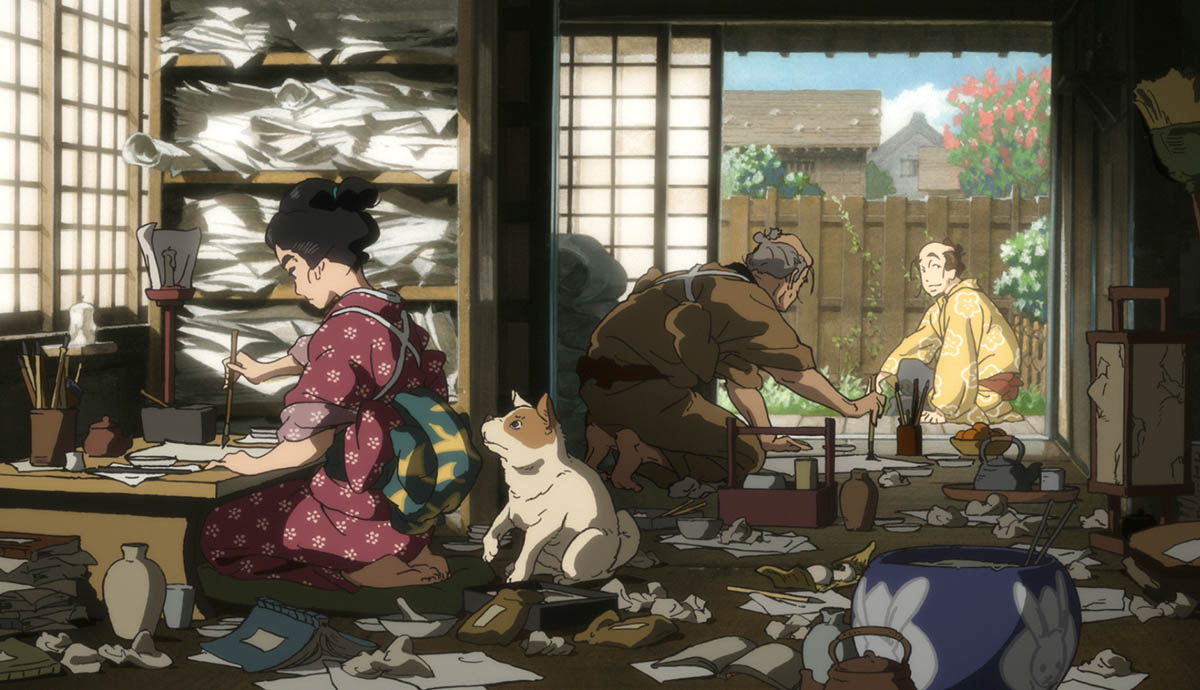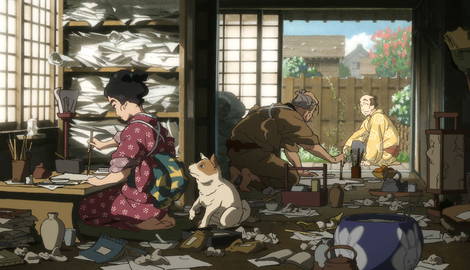
Nihonga is a word that means Japanese painting. American Professor Ernest Fenollosa coined the term during his lecture, The New Theory of Art, at the Dragon Pond Society in 1882. There he outlined several key features of what sets apart Nihonga, or traditional Japanese art techniques, from Western styles:
- It doesn’t aim to be realistic as a photograph.
- It doesn’t have shadows.
- It has an outline
- The color tone isn’t rich.
- The expressions are simple.

Nihonga is a word that means Japanese painting. American Professor Ernest Fenollosa coined the term during his lecture, The New Theory of Art, at the Dragon Pond Society in 1882. There he outlined several key features of what sets apart Nihonga, or traditional Japanese art techniques, from Western styles:
- It doesn’t aim to be realistic as a photograph.
- It doesn’t have shadows.
- It has an outline
- The color tone isn’t rich.
- The expressions are simple.
But why would Japanese art need such an umbrella term to tell it apart from foreign art? The historical context of 19th century Japan is important to understand this. In the Meiji Period (1868 – 1912), Japanese authorities opened the country’s borders to foreign influence for the first time in two centuries. Since 1639, Japan had a Sakoku, or closed country, policy. Sakoku banned nearly all outsiders from entering and prevented Japanese layman from leaving.
Toyotomi Hideyoshi (1537-1598) was a Japanese samurai and politician who launched this policy. He saw that Spain conquered the Philippines and that European missionaries were converting commoners to Christianity. He felt alarmed at Europe’s potential to take over Japan; so, he crushed early conversion efforts and began the implementation of an isolated Japan.

This effort was flipped around later when the nation realized they were more at risk of being colonized if they didn’t open their borders. In 1853, U.S. Commodore Matthew Perry brought his fleet to the shores of Japan, demanding that they open their ports. Japanese authorities saw how advanced their technology was, and didn’t want to be taken and quartered like China was in its long Opium War. So, they followed a different policy instead: open their borders, and adopt Western traits to become an equal instead.
This all ties back to Nihonga because the art genre was created to keep a part of traditional Japanese identity alive. Yōga became a term for Japanese art that used Western techniques (think watercolor, lithography, prints, and pastels). So Nihonga became the counter-celebration of Japanese subjects, materials, and processes of art before Westerners came.

Its Materials: Wood, Soot, and Metal
Nihonga encompasses techniques from a variety of traditional Japanese schools. One of Fenollosa’s students, Tenshin Okakura, helped to preserve Nihonga by encouraging Japanese artists to reflect on modern topics through traditional art styles.
In fact, Nihonga had already existed for thousands of years. Traditional Nihonga methods of art were done on a wide range of materials including rock, wood, linen, silk, paper, and metal. Although the medium could change, Japanese artists mixed natural pigments with animal glue to create a colored paste.

Japan had its own version of tempera, the Italian paint made by mixing pigments with egg yolk. Gofun was made of powdered calcium carbonate (from the shells of oysters, clams, and scallops) to create a background or top white color on paintings. There was also sumi (ink), a mixture of soot with fishbone or animal hide to draw black outlines.
Another beautiful feature of Nihonga creatively adds metal to the pieces. Nihonga artists would grind up metal like gold, silver, or aluminum, to dust. This way, they could paint it onto the canvas and create small, shiny accents. They would also thin out metal to add leaves to each piece.

From Then to Now
You can see an example with elaborate accents in, Camellia Petals Scattering (1929) by Gyoshū Hayami. Its golden background was masterfully rendered by sprinkling fine gold dust onto kanbishi paper. The tree is based on those of the Jizô-in Temple in Northern Kyoto. They were about 400 years old when Hayami created this. Looking at other Nihonga art, you see that natural elements like animals and nature are common subjects.
Miharu Takizakura on a Spring Night (1998) is named after a 1000-year old cherry tree in Koriyama City, Fukushima. Painted by Chinami Nakajima, this piece gave the artist a reputation as one of the most talented Nihonga artists. Fans recognized his artwork for its intricate layers and 3D effects.

Other artists related directly to modern Japan by making foreign topics the center of their piece. Taj Mahal (2001) by Shun’ei Nishida includes traditional Japanese imagery, such as a hovering moon, in his depiction of the famous Indian temple.

Since its birth, Nihonga has inspired many artists of today such as Takashi Murakami, who mixed commercial art with Nihonga to create his superflat style. More importantly, Nihonga has been crucial to preserving Japanese influence and talent in a Western-dominated art market.







